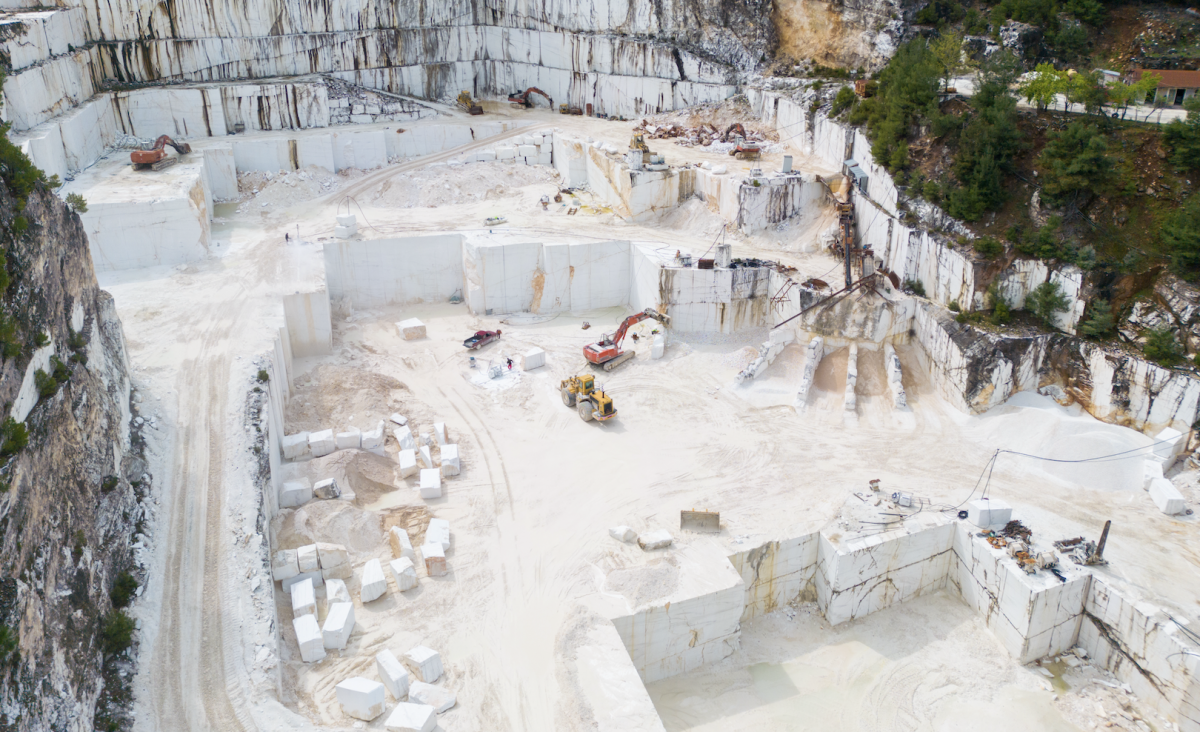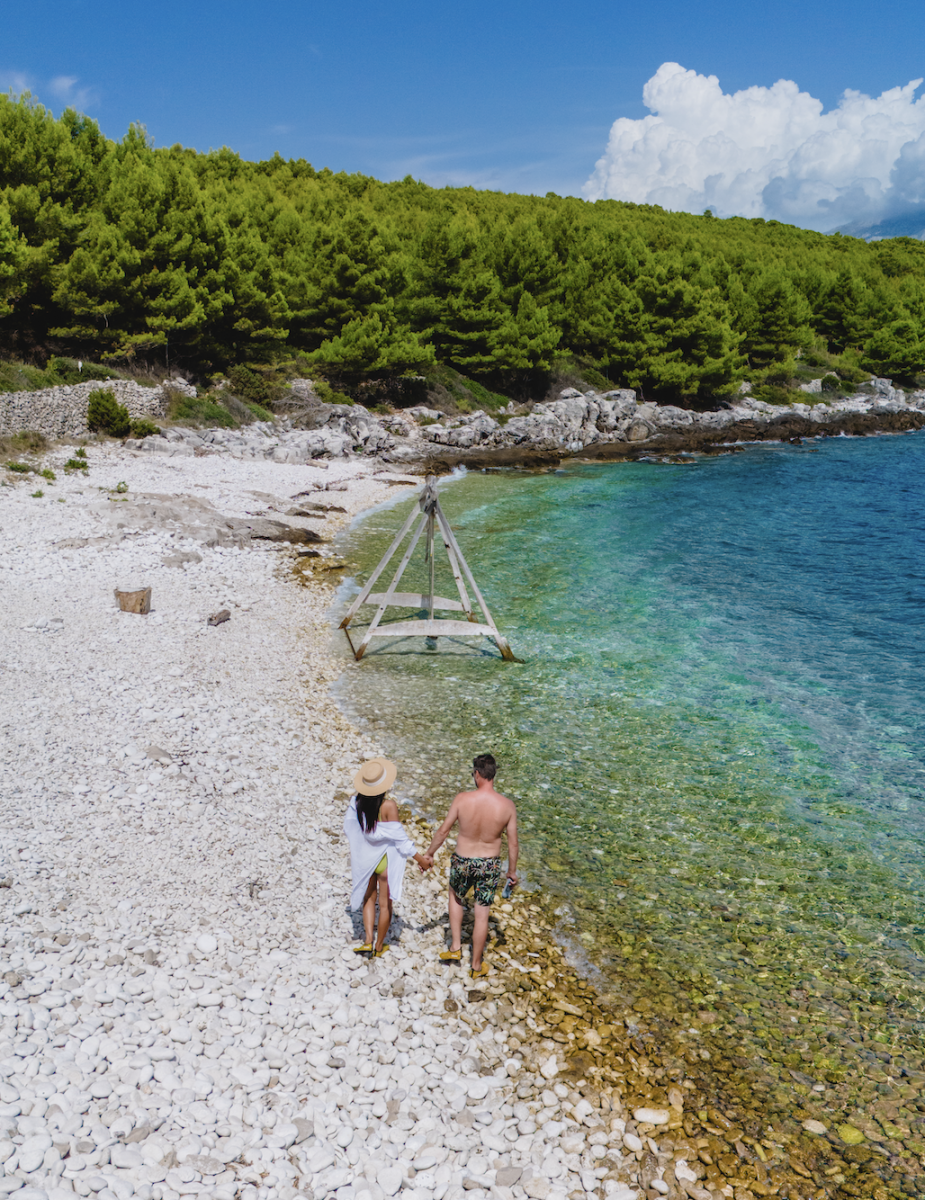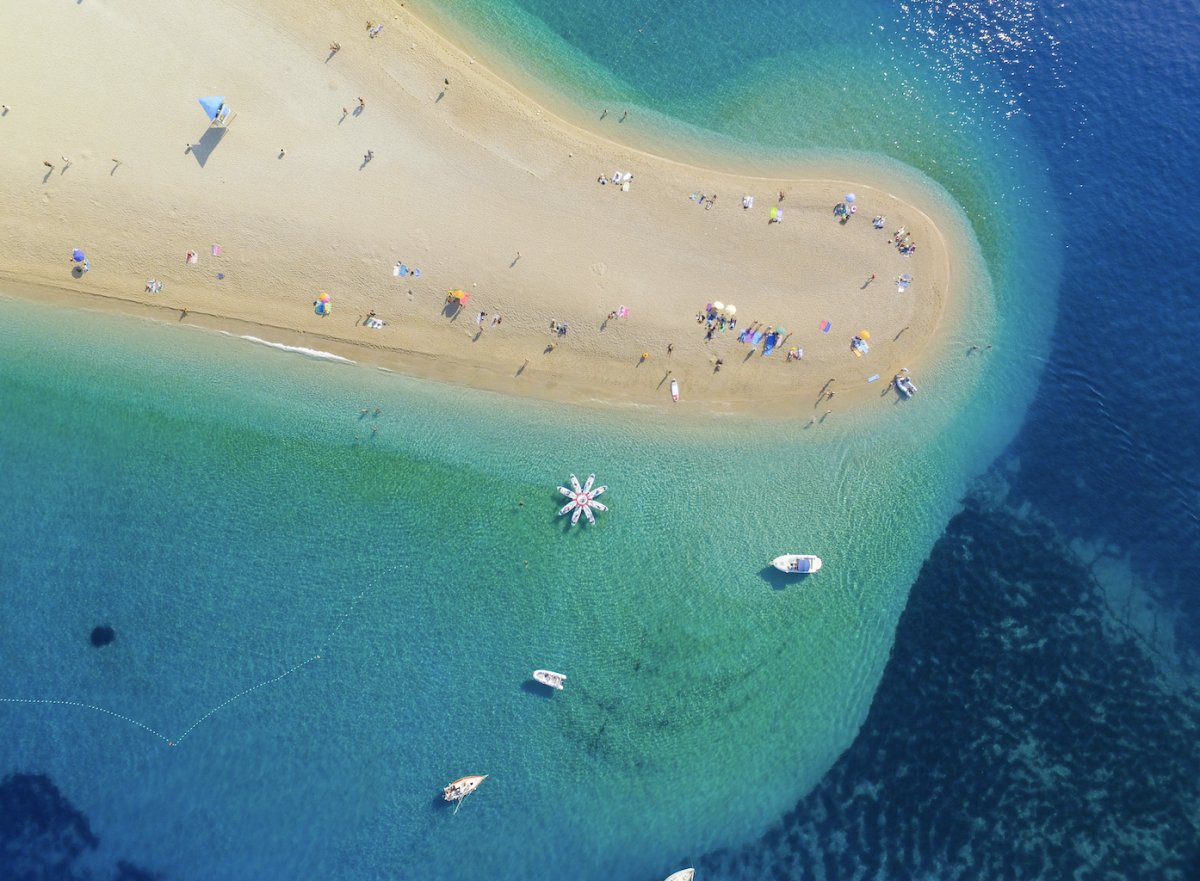Brac island - World famous for its stone quarries
Brac Island, situated in the heart of Croatia’s Dalmatian coast, is world-renowned for its historical stone quarries.
The island has been the source of high-quality white limestone for centuries, used in famous landmarks like the Diocletian's Palace in Split and even the White House in Washington, D.C.
But Brac is more than just its stone. It’s a place of stunning natural beauty, rich history, and a relaxed Mediterranean lifestyle.
In this article, you will learn about the island's stone heritage, top attractions, and why it’s a must-visit destination for travelers.
The white stone is the heart of the Island

Brac Island is synonymous with stone. The high-quality limestone, known locally as Brac stone, has been used for millennia in the construction of palaces, temples, and even entire cities.
The Brac stone is not only the economic backbone of the island but also deeply intertwined with its culture and identity. Stone masons on Brac have passed down their skills through generations, and today, visitors can still see the craft alive in the island’s traditional architecture.
The ancient quarries, especially around Pučišća, offer a glimpse into Brac’s storied past, where the island’s white stone was extracted and transported across the Adriatic and beyond.
Walking through these quarries feels like stepping back in time, where you can almost hear the echoes of ancient masons working with their chisels.
The Brac stone is famous for its durability, beauty, and versatility. It’s been used in some of the world’s most iconic buildings, from the aforementioned White House to various European cathedrals.
The stone is known for its pure white color and smooth texture, which make it perfect for sculptures, monuments, and architectural marvels.
Visitors to Brac can tour the stone quarries and even visit the School of Stonework in Pučišća, where students still learn the ancient craft of stone carving. This school is one of the last of its kind in Europe, making it a fascinating stop for anyone interested in Brac’s stone legacy.
Isola di Brac
Italians have long been enchanted by Brac Island (ita. Brazza), referring to it as Isola di Brac. Its proximity to the Italian coast and its deep-rooted history with the Venetian Republic during the Middle Ages have left a cultural mark that is still evident today.
Italian tourists frequently visit the island. The island is also a popular sailing destination for Italians, who love to explore its hidden coves, bays, and crystal-clear waters. The Italian influence can also be seen in the island's cuisine, with many restaurants serving a delightful mix of Dalmatian and Italian dishes.
Highest elevation is Vidova Gora
Vidova Gora, the highest peak on Brac Island, rises to an elevation of 780 meters (2560 feet). It is not only the tallest point on the island but also the highest peak of all the Adriatic islands.
Hiking to the summit of Vidova Gora offers breathtaking views of the Adriatic Sea and neighboring islands like Hvar and Vis.
The hike to Vidova Gora is a rewarding experience for outdoor enthusiasts. Once at the top, you can enjoy panoramic views that stretch out over the Croatian coast, with the iconic Zlatni Rat beach shimmering below. The climb is moderately challenging, but the view from the top is worth every step.
Is Brac the biggest Island in Croatia?
Covering an area of 396 km2, Brac is the biggest island in Dalmatia and the third largest island in Croatia. Its size makes it a versatile destination, offering something for everyone—from charming villages and cultural attractions to hidden beaches and adventurous hikes.
Brac’s strategic location between Split and Hvar has made it a key player in Dalmatian history.
How to get to Brac Island?
Reaching Brac Island is relatively simple, especially from mainland Croatia. The most common way to travel to Brac is by ferry from Split, which operates frequently throughout the day. The ferry ride takes around 50 minutes and arrives at the port in Supetar, the island’s main town.
There are also smaller ferries and catamarans that operate between Brac and other nearby islands, making it easy to include Brac in a broader Dalmatian itinerary.
Do you need a car on Brač Island?
Whether or not you need a car on Brač Island depends on your travel style and plans. The island is large, and having a car will allow you to explore its more remote areas, including Vidova Gora, Lovrečina Bay, and smaller villages like Bol and Milna.
Public transportation is available, but it can be infrequent, particularly in the offseason.
Renting a car is a great way to see all that Brac has to offer at your own pace. However, if you plan to stay in one area, like Bol or Supetar, you may not need a car as these towns are walkable and offer plenty of attractions within a short distance.
How long does it take to drive around Brač?
Driving around Brač Island can be a wonderful way to explore its scenic roads, towns, and beaches. It takes roughly 2-3 hours to drive around the entire island, depending on how many stops you make along the way.
You can easily combine a day of sightseeing with a visit to Vidova Gora, the stone quarries, and the beautiful coastal towns. Just keep in mind that some of the roads are narrow and winding, so drive carefully, especially when heading to more remote areas.
Does Brač have an airport?
Yes, the Brač Airport is open all year round. The facility is capable of landing and take-off passenger aircraft (Embraer 170, Embraer 190, Airbus 319, and Boeing 737-300) with up to 150 passengers.
As a tourist and economy development hub, the airport provides the islands with supplies, sports and recreation, and preserves the health and natural environment of the island.
Is Brac Island expensive?
While Brac Island is known for its luxury resorts and upscale holiday homes, it’s still possible to enjoy the island on a budget.
Accommodations range from five-star hotels to more affordable guesthouses and vacation rentals. Restaurants and activities also vary in price, allowing visitors to choose based on their budget.
Compared to other Croatian islands like Hvar, Brac is generally a bit affordable, particularly when it comes to dining and local services. However, during the high season, prices can increase, especially in popular areas like Bol.
Best things to do on Brac Island
There is no shortage of things to do on Brač Island, whether you’re interested in history, nature, or relaxation. Some of the top activities include:
- Visit the Zlatni Rat Beach
- Explore the stone quarries
- Hike Vidova Gora
- Visit the Dominican Monastery
- Enjoy water sports
Does Brač have sandy beaches?

Brač Island is famous for its rocky and pebble beaches, but if you're searching for sand, there’s one spot to visit.
The only sandy beach on the island: Lovrečina Bay
The Lovrečina Bay, located near the village of Postira, is the only true sandy beach on Brac. While it’s not completely covered with sand, it does offer a shallow, sandy shore that’s perfect for families and those who prefer soft sand underfoot. The bay is surrounded by lush greenery and provides a peaceful escape from the busier beaches.
The most beautiful beach in Brac

Without a doubt, the most iconic and beautiful beach on Brac is Zlatni Rat Beach, located near the town of Bol. Known for its unique shape that changes with the tides and winds, Zlatni Rat is a symbol of Croatian tourism and frequently ranks as one of the top beaches in Europe. The beach is ideal for swimming, sunbathing, and windsurfing.
Where to stay?
Brac Island offers a wide range of accommodations, from luxury hotels to budget-friendly guesthouses.
The town of Bol is particularly popular for tourists due to its proximity to Zlatni Rat Beach. Supetar, the island’s main town, also offers plenty of accommodation options, along with great restaurants and easy access to the ferry.
For a quieter experience, consider staying in one of the smaller villages like Pučišća or Milna, where you can enjoy the island’s charm and stunning views without the crowds.









